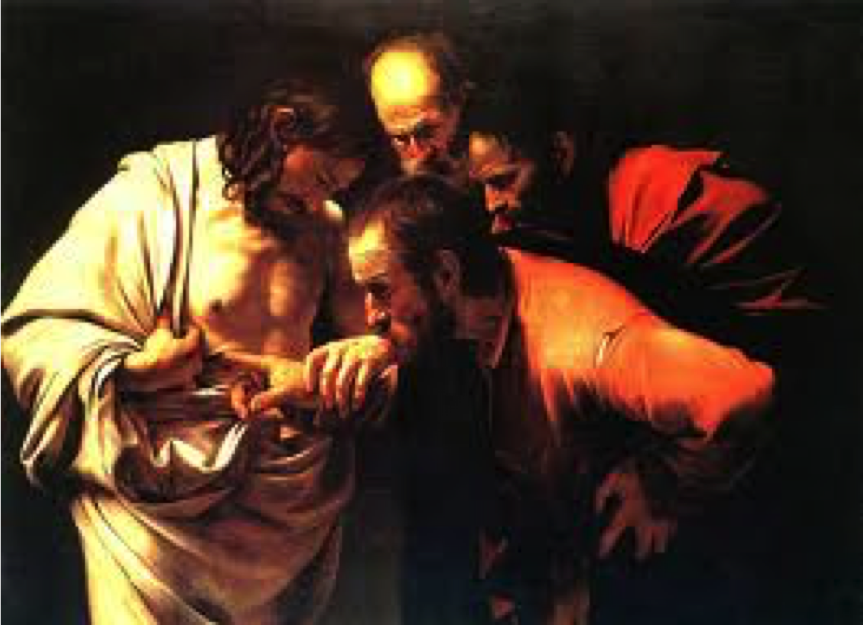SPECIAL REVELATION
We previously said that the term “revelation” can be understood in its broad sense as a “communication from God” or its narrow sense as the “disclosure of something previously unknown.”
These few segments about Jesus’ resurrection are part of what theologians call “special revelation.” This is revelation about God that is not readily apparent to every person. We said there are three different kinds of “special revelation”:
• The revelation of Jesus Christ
• Scripture
• Particular revelation to individuals
The most important of these is the revelation of Jesus Christ. This includes the understanding that Jesus of Nazareth was more than a good man or wise teacher: He was the Son of God. How do we know this? Well, there is reliable historical evidence for the resurrection of Jesus from the dead.
REVIEW
What we’ve learned so far:
1. Four blogs before this one, we established that Jesus died and was buried in Joseph of Arimathea’s tomb.
2. Three blogs ago, we demonstrated that Jesus’ tomb was found to be empty by a group of women.
3. Two blogs prior to this, we clearly established that there were post-mortem appearances of Jesus.
4. In our last blog, we said there was no existing tradition in first-century Palestine from which the resurrection narrative about Jesus could have originated — not from Christianity, not from paganism and not from Judaism. The idea of Jesus’ resurrection came from the disciples of Christ, but only AFTER he was actually resurrected.
There were multiple, independent sources within the first few years after Jesus’ death who attested to all four of these facts. We already stated that we think Jesus’ resurrection is the best explanation for all four of these facts.
We previously said that we need to:
1. (1) examine how accurate these facts are and then
2. (2) weigh the resurrection narrative against competing theories to see if they are more plausible.
In the last four blogs, we completed part (1). We now want to weigh what we’ll call the Resurrection Hypothesis or Resurrection Theory against other competing theories that have arisen since the first century.
THE OLDEST KNOWN ORAL TRADITION GIVEN TO PAUL WITHIN TWO YEARS OF JESUS’ DEATH
We start again with 1 Corinthians 15:3-8 (RSV). Paul tells the believers at Corinth, Greece:
3 “For I delivered to you as of first importance what I also received, that Christ died for our sins in accordance with the scriptures,
4 that he was buried, that he was raised on the third day in accordance with the scriptures,
5 and that he appeared to Cephas, then to the twelve.
6 Then he appeared to more than five hundred brethren at one time, most of whom are still alive, though some have fallen asleep.
7 Then he appeared to James, then to all the apostles.
8 Last of all, as to one untimely born, he appeared also to me.”
This was definitely an authentic letter written by Paul and the oldest known teaching in the entire New Testament.
THE RESURRECTION HYPOTHESIS
Today, there are only a small minority of New Testament scholars left who claim that Jesus did not have an honorable burial, such as John Dominic Crossan and Gerd Lüdemann. There isn’t much controversy about the fact that Jesus died and was buried in Joseph of Arimathea’s tomb. So our time would be most productively spent on the remaining “key aspects” of the resurrection narrative.
The “Resurrection Hypothesis” or “orthodox view” says that Jesus’ bodily resurrection is the best explanation for the three “key aspects”:
1. the empty tomb,
2. post-mortem appearances of Jesus, and
3. lack of any existing tradition that could explain where the idea of Jesus’ resurrection came from.
PSYCHOANALYSIS OF FIRST-CENTURY DISCIPLES
Almost all bible scholars living today think that the disciples had an experience of some kind and at least believed that they saw Jesus resurrected. At the same time, many skeptics have created competing theories to the Resurrection Hypothesis because they are not convinced that the disciples witnessed the literal bodily resurrection of Jesus.
If the disciples experienced something but it wasn’t a bodily resurrection, the only recourse left to skeptics is to:
• use the limited accounts we have in the Bible,
• to analyze the minds of those disciples who lived in the first century, and
• create a psychological explanation for what the disciples claim to have seen.
WAS “RESURRECTION” MERELY “THE RESUSCITATION OF A CORPSE”?
In attempting this monumental task, critics have consistently diminished the Resurrection Hypothesis by characterizing it as merely being the “resuscitation of a corpse.” Despite the fact that this is a false caricature, skeptics insist on repeating the phrase “resuscitation of a corpse” like a mantra or slogan. However, this ignores the meaning that first-century Jews attached to the term “resurrection.”
In our last blog, we said that the Jewish people drew a clear distinction between:
1. “Resuscitation” – in which a person returns from death to this earthly life and their normal physical body that will eventually grow old and die (as in the story of the prophet Elijah and the young son of the widow of Zarapheth).
2. “Resurrection” – raising a person from the dead within the spacetime universe to a body they will have in eternity (as in the case of Jesus).
3. “Translation” – bodily assumption directly out of this world and into heaven (as in the stories of Enoch and Elijah).
Over the past 200 years, critical scholars have been very aware of the fact that “resuscitation of a corpse” is an inappropriate characterization of Jesus’ “resurrection.”
These critical scholars who have developed competing theories appear to intentionally obfuscate the issue by failing to draw this distinction for the average layperson. The gospel accounts are definitely not talking about resuscitation. They’re describing the bodily resurrection of Jesus.
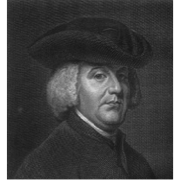
THE “TRADITIONAL APOLOGETIC” FOR THE RESURRECTION HYPOTHESIS
In 1794, William Paley wrote an excellent apologetic for Jesus’ resurrection entitled View of the Evidences. He used a “traditional apologetic” that typically did three things:
• defended the apostolic authorship of the gospels,
• assured the listener that we today possess the words of the original gospels, and
• proved that the gospels were historically reliable.
EFFORTS TO DISPROVE THE BODILY RESURRECTION OF JESUS
Over the last 200 years, there have been several attempts to offer contrary accounts that would discredit the idea of a “bodily resurrection.”
Conspiracy Theories
The “conspiracy theory” was the idea that the Jesus’ disciples conspired to steal his body from the tomb, buried it somewhere and then lied about his appearing to them. Some people thought it was a conspiracy of lying and deceit among the Essenes. Deists believed in God but did not buy the idea of revelation from God, miracles, Jesus’ claim to divinity or his resurrection. They perpetuated this idea through most of the 1600s and 1700s.
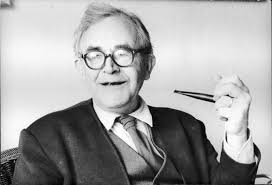
Around 1780, dialectical theologian Karl Barth said that Jesus deliberately faked his death using drugs provided by Luke so he could appear like a spiritual messiah and get Israel to abandon the idea of him as a political messiah. Barth speculated that Jesus must have been resuscitated by Joseph of Arimathea.
However, over time it became harder and harder to justify how the disciples would lie about something like Jesus’ resurrection and then suffer agonizing stoning, beating, torture and death for a narrative that they did not really believe in. Conspiracy theories have largely been abandoned.
The “Apparent Death” Theory or Swoon Hypothesis of the Rationalists
Rationalism tried to strike a balance between the Deists’ skepticism about miracles and orthodox Christians’ belief in the inerrancy of scripture. Rationalists said let’s discard the historical reliability of scripture and keep the spiritual truths expressed in Bible stories. For example, Rationalist theologian Heinrich Paulus believed that for the fishes and the loaves, there was a cave full of fish and bread. For Jesus walking on the water, he believed there was a platform with a board just below the surface of the water that Jesus walked on.
Regarding the resurrection narrative, most Rationalists also denied its historical reliability but held onto the spiritual significance of the narrative.

In 1802, Heinrich Paulus suggested what some call the “apparent death” theory or “swoon hypothesis.” Paulus believed that Jesus fell into a temporary coma on the cross and was somehow revived in the tomb.
Earlier in 1802, Karl Venturini had suggested that perhaps a group of supporters had walked by the tomb and heard him groaning inside, where Jesus had regained consciousness in the cool, damp air. Venturini said they frightened away the guards and rescued him. This last idea is not credible because the penalty for the soldiers abandoning their watch over the tomb would have been death.

In the 1830s, Friedrich Schleiermacher, the Father of Modern Theology, adopted Paulus’s “apparent death” theory himself. However, with our modern understanding of the medical effects of crucifixion, the “apparent” death or temporary coma was not plausible. The strain of having his flesh broken open with sharp pieces of bone, dehydration, a spear thrust toward the pericardium surrounding the heart, etc. would certainly have resulted in actual death.
This apparent death theory didn’t last very long anyway (1802 to 1835). In 1835, D.F. Strauss burst on the scene with his “mythology theory,” which supplanted “apparent death” and remained the dominant view among theologians for over a century.
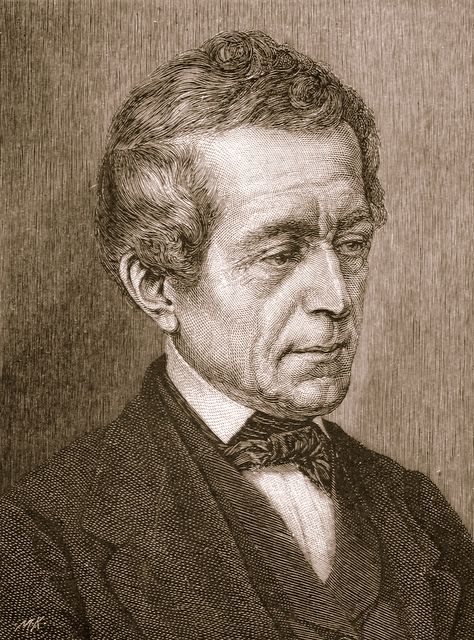
The Mythology Theory of D.F. Strauss and Rudolph Bultmann
In 1835, German theologian David Friedrich Strauss published his own book entitled, The Life of Jesus Critically Examined, which rocked the field of theology. Stauss mocked the conspiracy theory and Paulus’ apparent death theory as being absurd.
Crediting David Hume as his primary influence, Strauss reiterated one of Hume’s principles on miracles: You should never posit miraculous explanations of historical events when other explanations will always be much more probable.
Strauss appealed to the philosophy of the German idealist Georg Wilhelm Hegel to find the real message of Christ: “The incarnation and resurrection of Christ is really just a pictorial or metaphorical expression of Hegel’s view that the infinite and finite are one, that the infinite (god) unfolds in the material universe. The finite is an expression of the infinite.” This is basically pantheism.
It was under Scottish atheist philosopher David Hume’s influence that Strauss proposed the “Theory of Myths.” Strauss proposed (counter to everything we have taught you in these blogs) that a considerable length of time must have passed between the event of Jesus’ crucifixion and the eventual writing of the gospels. Strauss worked as hard as he could to push gospel writing back as far as possible into the second century! (We have since learned that this idea was not true).
In his book, Strauss proposed that:
1. the gospels were not written until the second century, and
2. the rate of legendary embellishment rapidly accelerated, the story told and retold so that everything in them was eventually legend.
However, Strauss ran into a major roadblock because he could not do that same thing with the letters of Paul! Remember in 1 Corinthians 15:3-8, that Paul specifically listed the witnesses who saw the risen Jesus and who were contemporaries living at the same time that he wrote that letter to Corinth, Greece. This passage was the earliest known teaching in the New Testament.
So Strauss had to go in a different direction and concoct a different theory based on psychoanalysis of first-century disciples, using limited references in the Bible. Strauss decided that he would attribute the experience of Paul’s list of witnesses to hallucinations. For example, Peter hallucinated. The disciples had a group hallucination. The 500 men had another group hallucination. Paul himself hallucinated (even though the men with him sensed that something had happened).
Strauss’ “myth” idea was the dominant view among theologians through the last half of the 1800s and the first half of the 1900s.
So regarding the gospels, we are supposed to believe that they were (1) written much later than we originally thought and (2) the rate of legendary embellishment accelerated in this one instance until everything in the gospels was legend. For Paul’s list of witnesses who were alive at the time Paul wrote it, each instance was supposedly due to individual hallucinations and group hallucinations. (Wow, we guess that we just don’t have enough faith to believe this kind of thing!)

In the 1900s, the “mythology theory” was also the view adopted by German theologian and New Testament scholar Rudolph Bultmann, the man who dominated the field of theology through most of the twentieth century. The existential theology of Bultmann would not recognize the historicity of the resurrection and he declared that the resurrection must be “demythologized” (his favorite word) to reveal the true Christian message. However, in 1953, Ernst Käsemann, a pupil of Bultmann, called his historical skepticism toward Jesus unwarranted and counterproductive. By 1968, this refusal to investigate the historical events of the resurrection gave way to a flood of historical inquiry, and Bultmann’s skepticism lost its following.
Our Response: It seems arbitrary and capricious to simply refuse to consider miracles or the supernatural along with every other possible explanation. If miracles do not stand the test of historicity, let them fail but don’t refuse to even investigate such claims. To exclude them at the outset and refuse to even consider a supernatural explanation reveals an arbitrary and unjustified methodological bias. Our minds should be open to every possibility. We should investigate every explanation and apply the same historical criteria to each one without preconceptions.

The “Subjective Vision” Theory of Gerd Lüdemann
German New Testament scholar Gerd Lüdemann said the disciples had visions of seeing Jesus that were actually projections of the disciples’ own consciousness, of their own minds. Ludemann thinks that Peter was emotionally distraught and burdened with guilt over denying Christ. So as a psychological release Peter imagined or projected visions of Christ. But how would Lüdemann know this?
According to Lüdemann, this started a chain reaction among the disciples, and they began to hallucinate as well. Ludemann does not like the word “hallucinate” so he calls them “subjective religious visions” which makes it sound more acceptable and less demeaning so people will be more likely to accept the theory.
The problem with this theory is that it doesn’t address Paul. He wasn’t part of that causal chain of hallucinations among the earlier disciples. He wasn’t there to witness the appearances in Jerusalem right after Christ’s death.
Lüdemann’s explanation for Paul is that he was laboring under a secret guilt complex that Paul himself was not even consciously aware of. He couldn’t live up to the Jewish law and felt guilty about that. He was zealous about persecuting Christians because he was attempting to compensate for a secret attraction that he unconsciously felt toward Christianity. Finally, on the road to Damascus, this subconscious attraction broke through to his consciousness and he projected this vision of Jesus on the road to Damascus.
In Lüdemann’s theory, the story of the empty tomb is a legend that developed years later as an explanation for what happened to the body of Jesus. So the resurrection idea originated in the “subjective visions” or hallucinations of the disciples.
Our Response: The problem with this “subjective vision” theory is that we first have to buy the idea that the disciples were hallucinating, a difficult thing to conclude centuries later. Not only that, be we have to believe they experienced repeated group hallucinations of 12 and 500 men at a time! Also, the disciples observed Jesus eating fish. They touched the wounds in his body. It’s difficult to understand how they could have been hallucinating with the witness of both sight and touch that they experienced.


The “Objective Vision” Theory of Hans Gräss and Wolfhart Pännenberg
Another more sympathetic view is the “objective vision” theory, defended by Gräss and Pännenberg. They say that God caused the disciples to see these visions, and they were actually seeing Jesus. They weren’t self-induced hallucinations or projections of their own minds the way Leudemann thinks. These were real communications from God in which they actually did see something.
However, these weren’t physical bodily appearances of Christ. They were real, but they weren’t physically real. They were spiritually real. So they didn’t really touch his body. He wasn’t really present.
They just saw spiritual things in a vision. But it wasn’t a hallucination. It was real, just not physical.
Gräss doesn’t believe in the empty tomb. According to him, the empty tomb was legend that developed over time. On the other hand, Pännenberg does believe in the empty tomb. The body of Jesus was raised from the dead in his opinion, but the resurrection appearances were not physical manifestations but instead spiritual only.
Even though Gräss and Pännenberg both believe there actually were resurrection appearances of Jesus of Nazareth, this theory is listed here because it also tries to dispose of the idea of a bodily resurrection.
Our Response: We appreciate the fact that Gräss and Pännenberg both believe that the witnesses’ experiences were very real. However, it is difficult for us to relegate these experiences to simply “spiritual visions” when Jesus actually ate fish and the disciples touched the wounds in his body. A spirit does not have physical dimensions. This was a bodily resurrection.
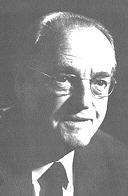

The “Interpretation” Theory by Willi Marxsen and Episcopal Bishop John Shelby Spong
Some theologians say that, after Jesus’ crucifixion, the disciples had some kind of genuine, radical experience, but we today can’t really say what that was. The disciples struggled with how to describe it also. Finally, someone like Peter latched onto the Jewish view of death and resurrection and just said, “He is risen from the dead.” So it was just a mystical explanation borrowed from Judaism to describe their mystical experience with Christ.
John Shelby Spong says that Peter had denied Jesus three times just when Jesus needed him most. So Peter went back to Galilee in anguish and guilt. As a means of alleviating this guilt, he had this experience with Jesus who he thought he saw forgiving him.
Spong further speculates that Peter told the other disciples and just blurted out the Jewish expression, “He is risen from the dead.” And then all the other disciples began to adopt this metaphorical language of being “risen from the dead,” and that’s how this idea of resurrection originated, as a sort of interpretive category that Peter might have used to describe his experience.

SUMMARY: HOW BIBLICAL CRITICISM DOMINATED THEOLOGY FROM 1835 TO THE 1960s
D.F. Strauss
In 1835, D.F. Strauss declared that the gospel accounts of the resurrection were unreliable legends colored by myth. To make this mythical interpretation work, Strauss needed to
1. question the authenticity of the eyewitness accounts,
2. claim that there was a long period of oral transmission of the gospel narratives before anything was ever written down, and
3. rapidly accelerate the normal rate of legendary development.
It was Strauss’ view that the gospels were rapidly weighed down with myths during the time of oral transmission and that they were not written down until the second century.
On the other hand, Strauss had to admit that 1 Corinthians 15’s reference to the “living witnesses,” among them 500 men who saw a post-mortem Christ, did present a problem for his myth theory: either Jesus did not actually die or he did not rise from the dead (because a miracle would be impossible).
Strauss’ work had the effect of silencing orthodox Christians who would normally turn to the “traditional apologetic” presented by men like William Paley in 1794. This didn’t mean that orthodoxy, or what might be called the “supernaturalists’ view,” was false. Strauss simply made an a priori assumption that miracles were impossible and ruled it out of bounds for any intelligent discussion!
So Strauss became the most powerful influence on theology throughout the 1800s. In the 1900s, Rudolph Bultmann adopted Strauss’ default view of assuming that everything was myth until proven otherwise. Bultmann was the most influential theologian of that century. So from 1835 until the 1960s, every aspect of the gospel accounts was considered to be myth unless proven otherwise.

Karl Barth
Through the first half of the 1900s, the dialectical theology of Karl Barth strongly supported the “doctrine” of resurrection but would not endorse it as an actual historical event.

Rudolph Bultmann
The existential theologian of Rudolph Bultmann would not recognize the historicity of the resurrection and he declared that the resurrection must be “demythologized” to reveal the true Christian message. However, in 1953, Ernst Käsemann, a pupil of Bultmann, called his historical skepticism toward Jesus unwarranted and counterproductive. By 1968, this refusal to even investigate the historical events of the resurrection gave way to a flood of historical inquiry, and Bultmann’s skepticism lost its following.
THE IMPACT OF BIBLICAL CRITICISM
As biblical criticism dominated the field of theology from 1835 (Strauss) until the 1960s (Bultmann), the subject of the resurrection was declared off-limits as a subject of discussion because of its miraculous nature. The assumption that it was just myth held sway throughout that time period. Because this view was so pervasive, it required that orthodox believers, who believed the resurrection was an actual historical event, abandon the “traditional apologetic” that we mentioned earlier and use a different approach.
How Biblical Criticism Altered The Approach of Traditionalists
So to give credibility to the gospel accounts of the resurrection, orthodox believers would need to (1) identify those elements that the majority of Bible scholars can agree are historically accurate, and (2) argue that the hypothesis of Jesus’ resurrection is the most probable explanation to explain those historically accurate facts.
So this new approach to apologetics will require us to evaluate the historicity of each element of the resurrection narrative and use a methodical approach to objectively compare various theories of the resurrection narrative to ascertain which is the most credible.
That is exactly what we have done in this series of blogs on Jesus’ resurrection.
WAS THERE ENOUGH TIME FOR LEGENDARY EMBELLISHMENT AS STRAUSS SUGGESTED?
In examining the historical reliability of any past event, there are two primary concerns that historians have:
1. From the date of the actual event to the point that the event was recorded, did enough time pass for legendary embellishment to have occurred that could have obscured the essential details of the event?
2. Are there multiple, independent sources that corroborate the essential details of the historical event?
Was there sufficient time for legendary embellishment of the resurrection narratives to occur? The closer a source or recording of an event is to the actual event itself, the more accuracy it’s assumed to have.
If this oral tradition about Jesus’ burial, empty tomb and resurrection appearances was being taught by Christians within two years of Jesus’ death, this would be the oldest teaching in the entire New Testament.

THE RATE OF LEGENDARY DEVELOPMENT
Two years is NOT enough time for legendary embellishments to have been added. Oxford historian Adrian N. Sherwin-White, a renowned expert on Greco-Roman Studies actually studied the rate of legendary accretion in the story of Herodotus, a Greek historian who lived in the 400s B.C. (Cicero called him “The Father of History.”)
Historian Sherwin-White tells us that the writings of Herodotus allow us to observe the rate at which legendary embellishment occurs. His conclusion was that two generations is too short a time for embellishment to eradicate the essential historical facts of an event. In this case, two generations would be beyond 100 A.D.
Mark, the first gospel written, was penned in about the 40s A.D. Luke and Acts in the 60s A.D. The gospels were all written before 100 AD. Sherwin-White goes on to tell us that the gospel narratives were written so close to the time of the actual events that the rate of legendary development would have to have been accelerated to an unprecedented rate in order for the essential elements of the gospel narratives to be adulterated by myth or legend.
Not only this, but Bible scholars today agree that the gospel writers used sources that originated even earlier and closer to the time of Jesus than when the gospels were written. For example, an expert on the gospel of Mark, theologian Rudolph Pesch tells us that for his gospel Mark used a source to tell the story of the Passion that extended all the way back to at least as early as 37 A.D!
Our Response: It’s the opinion of this website that Hume, Strauss and Bultmann were wrong in their methodological approach. No objective methodology can simply exclude the possibility of the supernatural from the outset based on a preconception and thereby refuse to even consider supernatural explanations. Apply the tests of historicity to them as you would to any other aspect and let each explanation stand or fall on its own merits. This is how any historical inquiry should properly be conducted.
WHAT DO THE MAJORITY OF BIBLE SCHOLARS BELIEVE TODAY?
As a result of modern-day arguments for the empty tomb, post-mortem appearances and no existing tradition that would explain the narrative of Jesus’ resurrection, the majority of Bible scholars living today agree that:
• Christ died,
• He was buried in Joseph of Arimathea’s tomb,
• A group of his women followers found the tomb empty three days later,
• He made post-mortem appearances to several individuals and groups of witnesses over a 40-day period,
• There was no existing tradition of an individual resurrection in the Jewish culture of that day that would explain this narrative.
We believe that the best explanation for all of these facts is that God raised Jesus from the dead by supernatural power.

SOME RENOWNED JEWISH THEOLOGIANS ARE CONVINCED ABOUT THE RESURRECTION OF JESUS
The well-known Jewish theologians Pinchas Lapide and Geza Vermes both were convinced that Jesus was not the Messiah but was resurrected from the dead! Renowned Jewish Orthodox theologian Pinchas Lapide lived from 1922 to 1997. In 1979, he wrote The Resurrection of Jesus: A Jewish Perspective.
Lapide started by saying that resurrection is a Jewish concept in the first place. He called the gospel narratives “a Jewish faith experience” in full consonance with the historical teachings of Judaism.
After reading the gospels, he concludes that they are very honest portrayals partly because they are so candid about the disciples’ faithlessness. He said that Jesus was not the Messiah, but he was resurrected.
Lapide believed that once the gospels were understood in their Jewish context, they provided sufficient evidence to convince him that God actually did raise Jesus bodily from the dead.Pinchas Lapide believed in the bodily resurrection of Jesus.
Jewish theologian Pinchas Lapide apparently was not convinced by explanations such as a conspiracy, a temporary coma, hallucinations, a group hallucination of twelve men, another group hallucination of 500 men, a purely spiritual appearance of Jesus or arbitrarily relegating the resurrection to myth and refusing to investigate it.
CONCLUSION
Almost all bible scholars living today think that the disciples had an experience of some kind and at least believed that they saw Jesus resurrected. The only recourse left to such skeptics is to:
• use the limited accounts we have in the Bible,
• to analyze the minds of those disciples who lived in the first century, and
• create a psychological explanation for what the disciples claim to have seen.
Every one of these competing theories attempted to get rid of the idea of Jesus’ bodily resurrection:
• Gradually, the “conspiracy” theory collapsed under the weight of the evidence that each disciple was willing to suffer incredible torture and gruesome deaths for their belief in Jesus’ resurrection.
• The “apparent death” theory succumbed to the knowledge we have today about medicine.
• Since the 1960s, when the field of theology once again allowed historical inquiry into the death and resurrection of Jesus, the “mythology” theory lost much of its support.
• Regarding the “subjective vision” theory, calling a hallucination “a subjective vision” does not really explain the problem of “group hallucination” among the Twelve and 500 men at once. It doesn’t explain Paul, and the idea that Paul was suffering from “a guilt complex” is a theory with no textual support.
• The “objective vision” theory at least tells us that the disciples actually saw a very real spiritual vision from God, but it too militates against this idea of a bodily resurrection, this despite the fact that Jesus ate fish and the disciples touched the wound in his side and inspected his hands and feet. In saying that this vision was not a hallucination, but actually occurred, this theory comes the closest to orthodoxy.
• As to the “interpretation” theory, it speculates that Peter suffered from such overwhelming guilt that he needed to imagine a vision of Jesus forgiving him and suddenly just blurted out, “He is risen from the dead,” and by the power of suggestion this expression spread among the disciples. That’s a lot of psychoanalysis about first-century figures. We still do not understand how that explains their touching Jesus’ side, hands and feet.
For those at this website, it appears that NONE of these ideas are able to successfully accomplish their goal of disposing of the bodily resurrection of Jesus.
With modern-day evidence that oral traditions like that found in 1 Corinthians 15 were being taught within two years of Jesus’ death, most critics of the Bible have abandoned the conspiracy theory, the apparent death theory, and there is considerable doubt about the “mythology theory.” Today, there are still a few supporters for the “subjective vision” theory and “objective vision” theory, and even fewer for the “interpretation” theory.
But the traditional view of a supernatural resurrection has been resurgent since the 1970s!
FURTHER READING
This analysis of competing theories was obtained from Dr. William Lane Craig in his book Reasonable Faith.
For further insight on the resurrection, read N.T Wright’s exhaustive study entitled The Resurrection of the Son of God.

